Features of a Yucatan Colonial Home
Many people come to Merida to investigate and invest in the real estate market these days... what's the attraction? While there are many kinds of properties to choose from, including modern condos and beach homes, probably the most charming properties are the old colonial buildings in the historical center, with lovely European architecture, antique floor tiles and high beamed ceilings that can be renovated into truly special homes. There are old colonial buildings in many large cities in Mexico, but many of the best values are found here in Merida. Yet, before you buy that fixer-upper and begin renovating, it's good to know a little bit about the architecture here, and the process of renovation.
Typical Yucatecan homes are constructed with stone (if they are more than fifty years old) or a combination of stone and concrete block. The old stone walls, which are a combination of rough-hewn limestone and plaster are called mamposteria (mom-pos-tare-EE-uh). Most colonial homes in the historic centro of the city have mamposteria walls either as exterior walls or throughout the entire building. Concrete block walls are also common, especially with newer buildings. Houses built of red brick or tabique (tah-BEE-kay) are rare, and houses built with wood are even more scarce. There may have been more homes built of wood in the city originally, but few if any are still standing.
The roof of a colonial building, called a techo (TAY-cho), is almost always flat, and slightly sloped to provide for runoff. Originally, roofs were laid down first with heavy wooden bigas (beams), and then covered with tile and concrete. But in the 19th century, iron bigas were used. These were actually railroad track used for the small scale henequen trucks. To guard against rain and leaks, the roof is then covered with impermeabilizante (em-perm-ay-ah-beel-ay-SAN-tay), an latex-based, thick waterproof paint. This is often laid down over a layer of very thin paper or cloth for added protection. A roof needs a new layer of impermeabilizante every three or four years in the Yucatan.
Traditionally, stone or block walls are covered first with a two layers of hand-applied plaster, a rough coat and then a fine coat. For an authentic restoration, several coats of cal paint are applied. This local style of paint is mixed on site, and consists of a colored powder, white cal powder - essentially cement - and a dash of white glue as a binder, creating a paint similar to those used in frescos. It is brushed on in manos (literally "hands"), as in dos manos or two coats of paint. Because the paint is mixed locally, people find it easy to be creative with color. As as you look around the neighborhoods of Merida, you can see the results of their creativity. Cal paint will eventually show discoloration from moisture, and may eventually flake off due to excess moisture in the stone wall beneath it. Exterior walls painted with cal often need to be repainted every other year, and interior walls a little less often. You can paint with more durable types of paint, but these paints do not necessarily stick to the stone walls any better than cal in this climate. And shiny enameled walls look pretty out of place here in the Yucatan.
After the plaster and sometimes even after the paint is applied to the walls, the plomero (plumber/electrician) applies his craft. This often requires digging out channels in the stone or block walls for wiring or pipes. Electricity and plumbing were new-fangled technologies when they arrived long after the original houses had been built, so most electricians and plumbers are trained to install these amenities after the structure is completed. Most old homes will also have at least two hamaquero (hah-mah-KAY-row) installed in most rooms. These are loops of metal designed to receive hammock hooks. If your home doesn't have any, don't worry. Hamaqueros can easily be installed with a little elbow grease and cement. New ones can be found in the local mercado downtown. Older-style hamaqueros and the hooks that go in them can often be found in local antique stores or made to order.
Another common feature of colonial homes in the Yucatan are the high ceilings. Ceilings of 18 and 20 feet are not uncommon and some can be even higher. Besides giving the rooms and buildings a sense of spaciousness and grandeur, the high ceilings allow the heat of the day to rise away from the inhabitants. Combined with the thick stone walls and windows covered during the day by heavy wooden or metal doors, this serves to keep the interior of these old buildings as cool as possible when it is impossibly hot outside.
Living in the Yucatan is very much an indoor/outdoor affair. Most houses in this part of the world have both indoor courtyards (patios) and gardens in the back of the house. The jardin (har-DEEN) often has a pool that is kept empty except for when it is about to be used. Many houses fill their pools from wells drilled on the property, and pools often were not built with modern filtering equipment. So the pools were filled when they were used, and then emptied until next time. Of course, modern pool equipment is readily available now in Merida and is more commonly used in renovations.
Overhanging the patio or an outdoor terrace is a tejeban (TAY-ha-bon), a slanted roof usually built from hard-wood beams and covered with red tile. The tejeban allows you to sit outside without sitting in direct sun or rain. Older tejeban in colonial homes can sometimes still be found with the original french tiles imported here in the 19th Century.
A distinguishing feature of a Yucatecan home that everyone notices right away are the colorful tile floors. These special floor tiles, known as pasta or mosaicos (mo-ZAHY-koz), are made here from concrete, colored powder and hydraulic pressure. They are laid down with a matte finish and polished in place after installation. You can read more about these tiles in our feature story about floors. The tiles can be chosen from existing colors and designs, or you can pay to have a mold created in a design of your choice. Either way, the result is a stunning floor for a reasonable price. If you are lucky enough to find an old colonial home with original floors, do not despair if the floor looks ugly and worn. Most of the time, these tiles can be repolished and will look as good as new.
Many old buildings still have original stenciled designs painted on the walls. Some of these are painted to resemble wall paper that would have peeled off in less than a season of tropical weather. Painting these is a skill that is still available here from local artists, so new designs can be painted on your walls, or old ones can be copied and renovated.
Houses in the Yucatan have very few windows. Most openings between interior and exterior spaces are doors. These doors usually have smaller doors inserted into them, above a typical person's sight-line, so that the small door can be opened for fresh air without giving up privacy. Original hardwood doors in old colonial homes are very valuable and can be refinished to be restored to their original beauty. A skylight, or tragaluz (TRAH-gah-loos), is easy to install in a ceiling and is another solutions for getting light into a dark interior room.
An original Yucatecan kitchen is often just open concrete shelves, sometimes covered with or edged with fired tiles. In this humid climate, before there was air conditioning (and even now, if you don't want to be running your air conditioners all day and night), it was best to leave shelves open so that air can circulate.
These are just some of the more obvious elements of a typical colonial home in the Yucatan. In our next article, we'll go under the surface to look at the typical plumbing and electrical solutions in this part of the world. We've been here for over four years now, and seen a lot of homes built or renovated. We've learned that often the building habits that did not originally make sense to us have developed for a reason. And it is best to learn how things are done here, and learn the reason why they are done this way, before you try to change things. More often than not, we've concluded that the great innovation we had in mind just didn't work in the tropics or with the chosen materials. Local craftsmen have been building houses here for over four centuries. The most successful renovations are informed by their history and traditions.




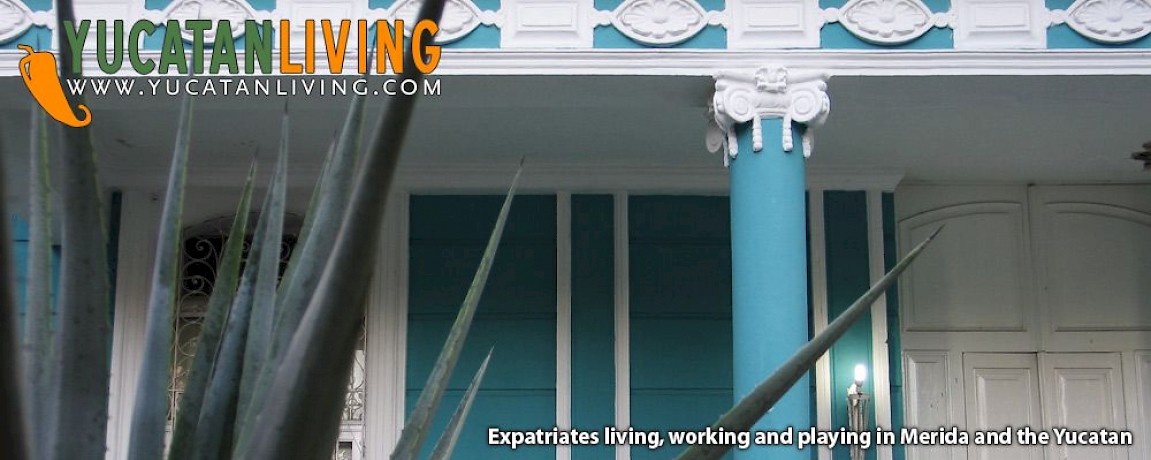


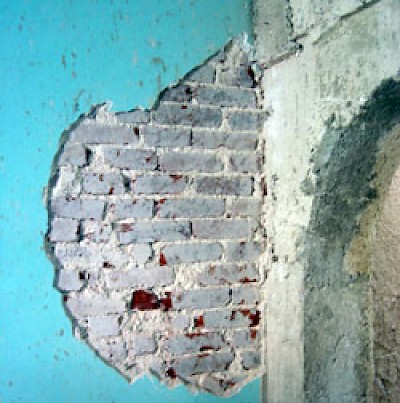
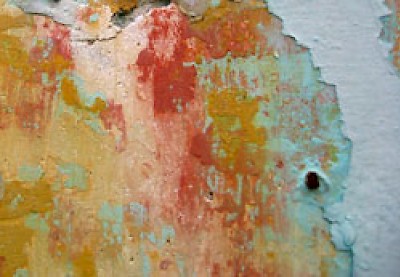
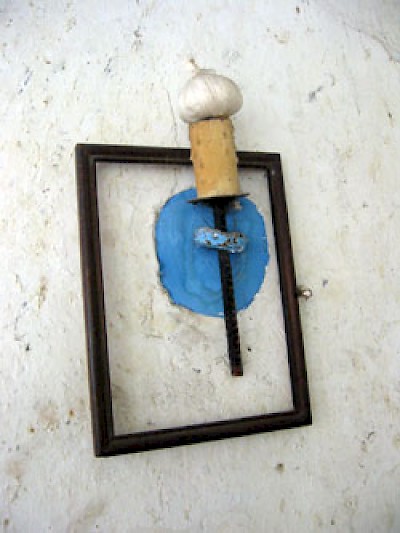
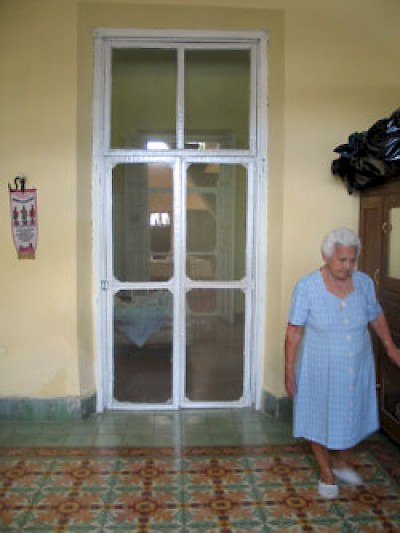
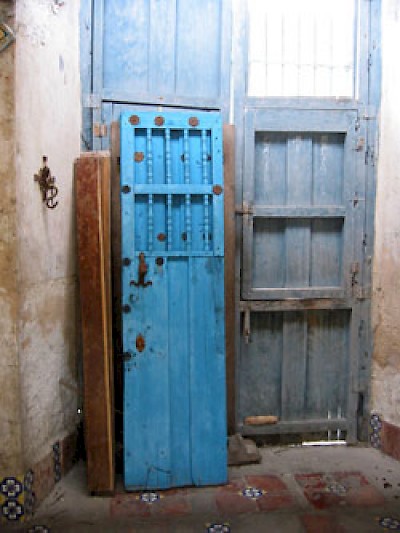

Comments
Working Gringos 17 years ago
Greg,
Building our new house in a colonial style has cost us about $45 USD per square foot, but we are working through an architect with professional work crews, paying social security, add all the modern ammenities, using best practices, etc. You can build for less than we paid if you supervise the project yourself and minimize on luxuries.
When doing a restoration, so much depends on the condition of the existing structure and how far you want to go with modern upgrades that it's difficult to predict a price per square foot in any general way.
Most people here say it costs more to restore than to build new, but that also depends on how much restoration is required or wanted. One of the easiest (and least expensive) projects we've done was restoring a small, two-bedroom colonial in the centro that we currently use as an office. The structure was fundamentally sound, our goals were modest and there were no "surprises".
It's the surprises and embellishments that usually drive up the cost.
Reply
Greg 17 years ago
Hi,
I am looking to buy and restore a colonial in Merida. Could you give me a sense (range) of what it costs to restore a colonial on a per square foot basis? ($30, $40, $50 per square foot?) Thanks.
Greg
Reply
Working Gringa 18 years ago
You could also put an ad on Yucatan Living and put your place in the Vacation Rentals section. If you are interested, email us at info@yucatanliving.com.
Reply
Working Gringos 18 years ago
Susana, there are three online venues that come to mind. One is www.yolisto.com, another is www.yucatan.craigslist.org and the third is www.meridainsider.com. All of these offer a way to post your Yucatan apartment rental on the Internet for free.
Reply
Susana 18 years ago
I'am planning to rent my apartment in Mérida. Somebody could tell me, how can I rented it by the internet?
Thank you.
Reply
Working Gringos 18 years ago
Tito is absolutely correct, in a way.
One of the things we find so interesting about Merida and Yucatan is that this place is like Walt Whitman: it contains multitudes. What we mean is that this area is so diverse and so different from the rest of North America that almost any point of view can be correct and incorrect at the same time.
Yucatan is a paradox.
We have seen ambitious operators move into the area over the last couple of years, trying to "make a killing" in real estate, as if this area were the next Baja California or Puerto Vallarta. And we have seen some locals trying to take advantage of the real estate mania that has affected our more ignorant gringo brethren.
But that doesn't change many other things that we think are true...
For example, any asset like real estate is worth exactly as much as someone is willing to pay for it, despite Tito's rational arguments to the contrary. Where we come from (California) there are properties that bona fide appraisers, using every rational metric in their arsenal, claim are worth over $400 thousand, but these properties have been recently foreclosed. Banks can't find buyers at $300 thousand in an auction.
A similar property in Merida - based on square feet, number of rooms, etc. - is priced at less than half that amount.
Does Merida have more going for it as a location than the Inland Empire of southern California? That's a rather subjective appraisal that really can't be calculated using math or metrics, but many people think that the people, culture, modern infrastructure, safety, access to beaches, tropical environment, etc. make Merida and Yucatan a pretty nice place to live. These are the people who are moving here to retire or to start a new life. The majority are not speculators.
Merida has the largest centro historico of any city in Mexico outside of Mexico City and many, many abandoned or run-down colonial-era houses. It also has no geographic boundaries, such as mountains or lakes, to impede its growth. This means that the supply of real estate is always greater than the demand, which keeps a ceiling on prices unlike any other urban/coastal area of Mexico or the U.S.
Meanwhile, the expatriates in Merida are not just U.S. gringos. The revaluation of the Euro makes dollar-denominated assets (the peso is a dollar proxy) look less expensive to Europeans, so many from the EU are moving here, as well as Canadians, and especially Mexicans from the interior of the country. These are people who are looking for an alternative to the costly and congested urban centers of Europe and Mexico, as well as those finding business opportunities.
Again, not speculators.
We can't really guess what Tito's frame of reference is. Maybe he is comparing today's value of real estate in Merida to the value ten years ago when you could find a large, abandoned colonial home that the seller was willing to "dump" for less than $30 thousand U.S. so they could move out of the centro and into a modern home in the north. Because ten years ago, before the Internet, everyone had forgotten about Merida and Yucatan.
Well, we're sorry, Tito, but those days are gone. However, we'd hardly call it a "bubble" when assets begin to be priced closer to what they are really worth on a global market. In California near the coast, a two bedroom, mass-produced tract house can cost up to half a million dollars.
Is it worth it?
Or maybe something with a bit more character priced at $150K makes more sense, Por ejemplo: San Juan - Urban Gem
Reply
Tito 18 years ago
Mérida is a wonderful place, as is New York. Santa Fe and Ibiza also were at one time.
But a reality check is in order for real estate prices in Mérida, as they are in New York, Santa Fe. LAX, Mexico City, Puerto Vallart aand many other places that are grossly overpriced, mainly as a result of an influx of international buyers, and at prices that are nowhere near true value or a correlation to the Mexican economy.
Mérida has numerous well rehabilited properties on the market at somewhat elevated prices, but are nevertheless products of good rehabilitation techniques and reasonable in American terms.
The same is not true for fixer uppers for sale in the Zona Centro for triple and cuadruple prices of what they are worth. Throughout Mexico, with the exception of Mexico City and downtown areas of other very large cities, lending institutions will not finance properties over 12 years old, beyond their commercial land value. Beyond Mexico City, younger and economically mobile Mexicans are generally not interrested in central city living.
The net result is that older urban properties are valued at their commercial land value, which in the zona centro of Mérida and most other Mexican cities is at a maximum of 100 dollars per square metre, and has been for the past 20 years. The wave of speculation does not ultimately change that hard reality of 100 dollars per square metre.
As one moves beyond the urban cores, it decreases, except in upper class areas. With some simple math, one can quickly arrive at the true value of property, which for most of the properties on the international market in the Yucatan is less than 25 per cent of what is being asked.
Resale opportunities are therefore mainly limited to foreign buyers, who in turn will be facing strong challenges from the decline of the U.S. dollar and the rapid increase in euro mortgage interest.
Added to this is another reality on the close horizon, the opening up of Cuba to U.S. tourism, which will have an enormous impact on Yucatán and Quintana Roo.
Bubble do burst, and New York and Mérida are no exceptions. The numerous long term Se Vende signs in Méria are a clear example of what is taking place.
Reply
janet 18 years ago
I'm not sure I entirely agree with the 'hyper silliness of the Mérida real estate market and its manipulation by American and European real estate types trying to recreate Santa Fe or Ibiza fantasies' section. Merida is beautiful, friendly, affordable and close to the US. I live in New York, and Merida has all the things I like about New York (walk everywhere, great food, delivery services, cultural activities, bustling, good public transportation) plus other more obvious qualities NY lacks. It will be a 4 hours away (if direct flights ever happen) and Santa Fe and Ibiza are not my cup of tea anyway, whatever the price........I agree that there is a lower 'upper' limit to the real estate market in Merida, but generally, I believe most buyers are investing for themselves and not speculating. Time will tell.
Reply
Tito 18 years ago
This message is for Michael of Chihuahua. Natural materials should be repaired with natural materials. Adobe should be patched with adobe plaster or cal plaster, mamposterÃa should be replaced with mamposterÃa or cal plaster, not with cement, which is at the heart of leaching around the bottoms of adobe, mamposterÃa and brick walls.
Yes, moisture does move downward, but mainly because it cannot escape at higher levels due to vinyl or oil paint or cement plaster that traps the moisture in the walls. It migrates down, looks for an exit, cannot find one, and begins to leach and eventually bulge out portions of the bottom wall.
Cement does not let the walls breathe, nor does latex or oil paint, which is why cal paint was and should always be used, especially in a tropical atmosphere. The best way to repair your problem is to replace the adobe with adobe paster or adode blocks and adobe mortar, second choice is brick with lime mortar, and to patch over with lime plaster, never with cement or cement block, and to use lime paint only.
You can read about some of this in Chihuahua at
http://www.serempresario.com/ver_art.ssp?art_id=439
I was in Mérida in June, and was appalled by the use of cement and vinyl paint, which will only leach, buckle and fall off over time.
Equally appalling was the hyper silliness of the Mérida real estate market and its manipulation by American and European real estate types trying to recreate Santa Fe or Ibiza fantasies. Those unreal prices have nowhere to go but down, way down, and make for Mérida being an extremely risky investment site at this time of tumbling global real estate markets.
But congratulations to Yucatan Living, it is a positive site.
Tito
Reply
Michael 18 years ago
Thanks for taking the time to write. I forgot to mention that I'm in the state of Chihuahua where there is an abundance of adobe. At least that's what all the locals call it. I wasn't so much concerned with the appearance of the leaching as I was the damage I thought might be occuring. I thought the dampness would cause the wall to crumble. I don't mind the look. The previous owner painted the house in colonial style where the bottom part of the wall is darker than the top. He did an awesome job restoring this house, and he's working on a second, much larger one now.
Again, thank you for taking the time to help me. Even though I live far from Merida, I'm enjoying your Web site tremendously.
Michael
Reply
Working Gringos 18 years ago
Michael,
We'll be honest with you. All the colonial homes we know have some leaching through the paint on the walls. This is an effect that so many faux finishes in the U.S. are trying to achieve. When we first came to Merida, we thought the walls looked a lot like the ones in old homes in Venice, Italy, which we found charming.
That said, there are ways to minimize (or enhance) this effect, if you wish. Let's start with terminology. We don't have adobe walls here, which are basically made of dried mud. The original walls in Yucatan colonial homes are made of limestone and mortar, and called mamposteria, as described in the article above. Moisture from humidity in the air can be absorbed by these walls and later seep out through the paint, causing discoloration or peeling. Original cal paints discolor, creating a "real" faux finish, but vanilica and modern paints peel, which creates quite a mess.
So the first and simplest answer is to use cal paint and re-paint your walls every year or two. Most of the leaching and discoloration are near the bottom of the walls because water flows downhill. When visiting many colonial homes, you may notice that some owners have painted the bottom two to four feet of their walls a different color (usually darker) than the top part of the walls. This is traditional, but also practical: you only need to repaint (or overpaint) the bottom part of the wall every year or two where the leaching occurs, which costs very little using cal paint and a local painter.
As your friends suggest, if it has been a long time since the problem walls were plastered, then you might want to consider removing all the old plaster from the mamposteria and replastering. You can have the plaster mixed with a sealer or have the sealer applied to the new plaster with a primer coat of paint. This won't completely eliminate the leaching, but it will slow it down considerably and perhaps result in a more subtle finish.
Another approach we've seen is to tile the bottom two to four feet of wall using modern ceramic or Talavera tile. This can be rather costly, but it certainly eliminates any problems with paint and can look quite stunning.
The most extreme solution is to replace the walls entirely with cinderblock, being sure to apply impermeabilizante (see article, above) to the foundation and first row of block. You may want to rent another house to live in while this project is underway, however. :)
Reply
« Back (10 to 21 comments)Next »